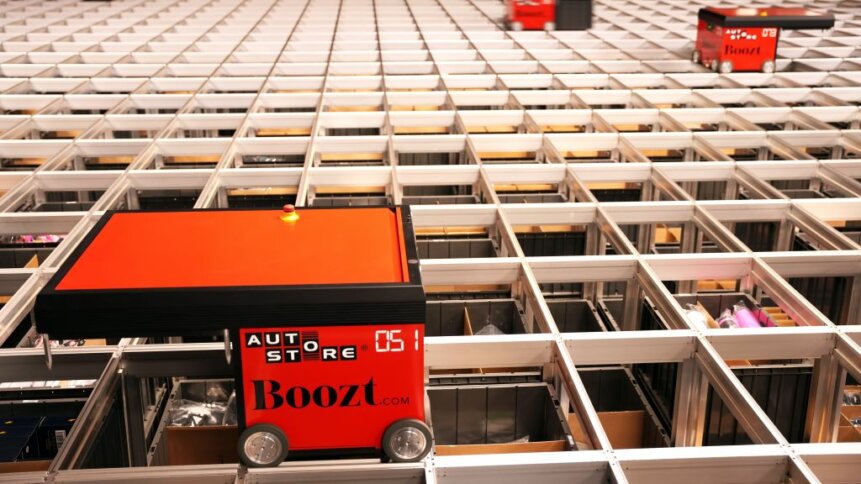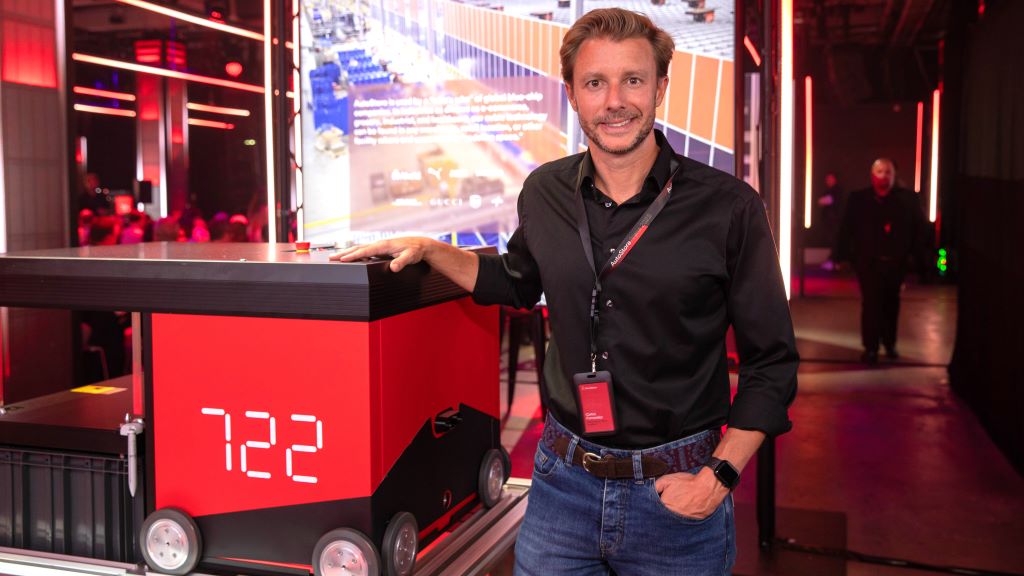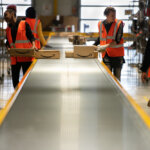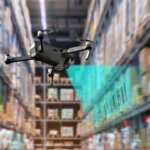Cube warehouse robots square up against humanoid designs

|
Getting your Trinity Audio player ready...
|
When you open the sci-fi book on warehousing, the future is one where humanoid robots are walking between storage racks, picking and packing goods. However, considering trends in warehouse automation systems and selecting the right robots for the job, sci-fi stereotypes may not serve as the best guide.
Rather than having bipedal humanoid robots roaming warehouse aisles, another option is to have automated cubes on wheels, riding on a grid of tracks above towers of inventory bins. It’s a robot design choice that – in the words of AutoStore – means less ‘airhousing’ and more warehousing.
Having a dense arrangement of bins in the middle of a facility, accessed by cube robots from above, rather than opting for a more conventional warehouse layout with shelves and aisles, means that firms can store 4X the inventory in the same space.
There are other reasons too, why having a cube- rather than a humanoid-shaped robot makes more sense when picturing the future of warehouse automation systems. The ergonomics of Autostore’s grid-based warehousing design means that human workers save having to walk distances of up to 12 km per day fetching inventory.
It makes no sense to replace humans with humanoid robots if those futuristic bipedal machines still have to navigate large distances around a traditional warehouse layout. Plus, the efficiency of cube-storage automation has been proven over decades. Today, AutoStore has more than 1250 of its automated storage and retrieval systems (ASRS) operating in over 50 countries.
Grid-based storage using warehouse robots
To picture the grid-based ASRS system in operation, imagine containers of warehouse inventory stacked one on top of the other, and grouped closely together. Aisles disappear, and goods are retrieved by cube robots from above, which travel backward and forward and from side to side on smooth tracks.
Depending on the depth of the container, bins can be stacked 24 high up to a total of 5.4 m (17.75 ft). Each has a weight limit of 30kg and can be subdivided to hold more than one SKU per bin. They are sturdy too, with bins – and the original grid – still going strong at AutoStore’s first customer installation, commissioned in 2005.
Thinking about other practical considerations, the grid-based ASRS system can be designed around pillars, pipes, and walls. And there’s even a so-called Bin Lift that allows bins to move between grid systems on different floor levels.
The system manages stock induction and picking in parallel, with bins transported to workstations to keep orders rolling. What’s more, the control software can integrate customer requests for items that may not have yet been placed into bins, and add them to the workflow.
Seeing the system in action, you start to understand the magic that’s required to meet e-commerce demands to have goods delivered faster to customers. It means that many warehouses now run 24/7 rather than operating on eight-hour shifts. And warehouse robots, whether they are cube-shaped or humanoid, have to accommodate that trend.
AutoStore has just released a ‘Pro’ upgrade to its popular R5 warehouse robot, which is optimized for extended operations. Thanks to lithium-Titanium oxide (LTO) battery technology, the R5 Pro can be charged more rapidly, improving individual warehouse robot availability.

Autostore’s Chief Product Officer, Carlos Fernández. Image credit: AutoStore.
Much is written about how advances in battery technology is helping to extend the range of electric vehicles, but there are benefits in other industry sectors too, and warehousing is one of them. AutoStore reports that 86% fewer chargers are required with a fleet of R5 Pro robots equipped with LTO batteries. And that space can be used to provide extra SKU storage or accommodate a smaller footprint layout.
Speaking with TechHQ about warehouse trends, Carlos Fernández – Chief Product Officer at AutoStore – says that high-density warehouse automation systems make the economics of having goods in brownfield sites – which have a higher cost per m2, but are closer to consumers – add up.
He also has thoughts on the topic of robots and employment. “There is a myth about automation removing jobs, it allows companies to grow and become more resilient,” he comments.
There’s a lot to like about warehouse automation, which includes having robots handling repetitive tasks. Done right, it paves the way for more interesting and fulfilling roles, with staff spending time on value-added services.
Road-testing warehouse robots
Given how critical warehouse operations are to a company’s success, it’s important to make sure that new automation technology is validated thoroughly before it’s released commercially. Fernandez explains that the R5 Pro was tested at five sites for six months over different periods to make sure that the warehouse robot was ready for launch.
The warehouse automation systems company also runs simulations ahead of any installation to test that its algorithms will deliver the results that are expected. Less popular items will be lower in the stack of inventory holders – for example, ski gloves during summer months – rising to the top as demand increases.
Measuring as they go, the drop-down grippers know when they are at the correct depth, and the cube-shaped robots work in parallel to remove bins and optimize inventory locations. The warehouse automation system also includes tools that provide status updates, so that operators can plan maintenance.
Clients that benefit the most from having warehouse robots are the ones who have mapped their processes well and understand what they are trying to achieve. Warehouse robots might be the most visible part of the solution, but the bigger picture is being able to optimize product management, eliminate picking mistakes, and meet expectations on customer service.
Lastly, as those customer service gains translate into business growth, warehouse operators need to have an automation system that scales.
One of AutoStore’s largest third-party logistics (3PL) clients is DHL Supply Chain, which currently has nine ASRS systems operating 800,000 bins. And, following expansion plans announced this month, that figure will rise to 1.2 million bins as additional warehouses come online.
A micro-fulfilment installation in Finland – featuring a chilled AutoStore – reduces the number of in-store pickers from 50 to less than 10, which frees up the supermarket aisles for shoppers. The warehouse automation system has doubled the daily volume of online orders that can be fulfilled and makes it easier to service larger business customers.










